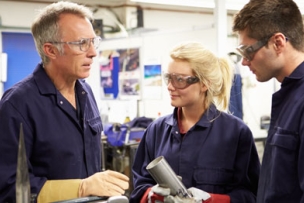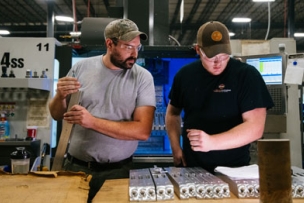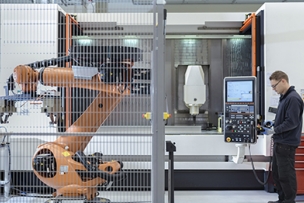Survival of the Fittest: Building a Business to Thrive in the Future
Despite a fledgling economy, two companies share tips on how to soldier on during a recession and come out on top.
The Great Recession, between the end of 2007 and mid-2009, was hard on many industries, and manufacturing was no exception. Companies downsized while others went out of business. Some, however, took advantage of the recession by reevaluating their business models, finding ways to improve their productivity and upgrading tools and equipment. Consequently, these are the businesses that were most prepared when the industry bounced back.
Doing Business During a Downturn
MORryde International, a machining and fabrication company in Elkhart, Indiana, did all of the above. In 2008, it cut head count by more than 50 percent, says Josh Moore, who works in sales at MORryde. At the time, the company had been growing at 20 percent a year, prospering by making parts for recreational vehicles. (Elkhart County is known as the “RV capital of the world.”) When the economic downturn hit, the company knew it had to diversify. It expanded into other sectors, creating new streams of revenue by building its own proprietary parts and manufacturing for other companies in a wide range of businesses, from hospital beds to military assemblies, says Moore.
All Tech Engineering, a designer and manufacturer of automation equipment in Wyoming, Michigan, initially put its machine shop on ice during the recession in 2008. The company cut shop staff from six employees to two, says Scott Charles, machining and fabrication manager. By 2015, however, the company had hired Charles to revamp its machining operations.
“Our tooling cost was through the roof because we were so inefficient,” says Charles, who further explains that the shop had been trying to save money by using old equipment and buying low-cost materials. The Mastercam software for CAD/CAM machines, for example, was out of date and running on old computers with obsolete graphics cards. Procurement was inconsistent and poorly managed, according to Charles. Tools and supplies were bought willy-nilly, for any and all projects at hand.
The first order of business was to buy new computers and software. Then, they developed a standardized practice for ordering materials and tools. The shop had been purchasing carbide from various suppliers with fluctuating levels of quality, Charles says. That, combined with the lack of standardized tool use, meant machinists “never knew what they were going to get,” he says. It was tough on the machinists, and on tools, which sometimes broke. Once the company started sourcing from a supplier who offered better quality carbide, tools lasted two to three times longer.
Charles made changes in other areas, as well. He created a project folders system where machinists file software programs from jobs, making them easier to locate. All Tech had an MSC Inventory Management Vending solution, which tracks tools and parts and automatically reorders them when supplies are low. But it was incorrectly programmed and not being utilized to its capacity, explains Charles. Machinists were still forced to order tools manually.
“Now, everything is organized in the MSC cabinet, so people know that whatever tool they need, it will be there. And it will always be the same brand of tool they used before,” he says.
“Now, everything is organized in the MSC cabinet, so people know that whatever tool they need, it will be there. And it will always be the same brand of tool they used before.”
When Business Is Booming
Although the company spent about $100,000 in tooling purchases and upgrades over the past year, the investments produced $38,000 in cost savings during that time. Business is booming. All Tech has staffed up its machining shop back to six employees and can barely keep up.
At MORryde, in addition to diversifying, heavy investment has been made in equipment and facilities. “In this calendar year alone we’ve invested tens of millions of dollars in our company,” says Moore. It has installed automation such as robotic welders and added more than a dozen state-of-the-art fiber-technology flatbed laser scanners, which cut at 900 inches per minute, compared with a 150- to 200-inches-per-minute rate of the older models. The company also revamped material handling and work-in-process flow.
Lessons Learned During the Recession
Today, MORryde has successfully expanded its reach. RVs are now only 50 percent of its business, and the company has five additional plants, increasing capacity by several hundred thousand square feet. Its workforce now numbers 850, way beyond its 2008 employment level.
“2008–2009 was a trial by fire … but some good came out of it,” says Moore. “You grow in times when you’re stretched.”
- Make the most of a downturn in the economy.
- Ensure there is a companywide, standardized practice for ordering materials and tools.
- It is essential to expand your company’s offerings into other areas of manufacturing whenever possible.
What excites you most about the future of manufacturing?




Talk to Us!
Leave a reply
Your email address will not be published. Required fields are marked *